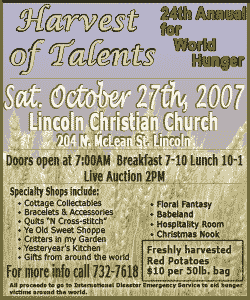|
 The mine owner and South Africa's minerals and energy minister vowed to improve safety in one of the country's most important industries after more than 3,000 of the miners were trapped when a pressurized air pipe snapped Wednesday and tumbled down a shaft, badly damaging an elevator. The mine owner and South Africa's minerals and energy minister vowed to improve safety in one of the country's most important industries after more than 3,000 of the miners were trapped when a pressurized air pipe snapped Wednesday and tumbled down a shaft, badly damaging an elevator.
"We have to recommit ourselves to refocus on safety in this country; our safety record both as a company and an industry leave much to be desired," Harmony Gold Mining Co. chairman Patrice Motsepe said according to the South African Press Association, as union officials accused the industry of taking short cuts on safety in the interest of profit.
There were no casualties. The hundreds of workers who remained underground were all near a ventilation shaft and had been given water
-- though no food, for fear of provoking a scramble among hungry miners, according to Peter Bailey, health and safety chairman for the National Mineworkers Union.

Mine general manager Stan Bierschenk said that most of the miners complained of heat exhaustion and fatigue.
Bierschenk said the company hoped to complete the rescue by lunchtime, although Bailey said this was optimistic and that late-afternoon was more realistic.
Sethiri Thibile, who was in the first batch of miners rescued about 19 hours after the accident, clutched a cold beef sandwich and a bottle of water he was given when he reached the surface.
"I was hungry, though we were all hungry," said Thibile, 32, an engineering assistant who had been underground since early Wednesday morning. He said there was no food or water in the mine.
"Most of the people are scared and we also have some women miners there underground," said Thibile.
Rescued miners emerged from the shaft with their faces etched with dust and the lamps on their hardhats still lit. "We are still all right. I am a bit relieved but very, very hungry," miner Jerry Lepolese said after.
As dawn broke over Carletonville, a town near Johannesburg, there were scenes of relief and despair. A woman put her arm around her sobbing daughter, who was apparently distraught at the lack of news about her husband.
Disgruntled family members stood outside the mine offices, complaining that they had not been given enough information about their loved ones.
[to top of second column]
 |
 "I am very traumatized, exhausted, not knowing what is going on," said Sam Ramohanoe, whose wife, Flora, 31, was among the trapped. "It is very unfair to us, not knowing what is going one with our beloved ones."
Deon Boqwana, regional chairman for the union, said there was ventilation for the miners waiting below ground and officials were in contact with the men by a telephone line in the mine.
Boqwana said the smaller cage being used to bring miners out can hold about 75 miners at a time. He said it normally takes three minutes to reach the surface but would be slower because rescuers were being careful.
Bailey, the union health chairman, said the miners were "very afraid," hungry and thirsty after being underground for hours.
"Some of these mineworkers started duty on Tuesday evening. It is now Wednesday night and they are still underground," he said.
A spokesman for the union, Lesiba Seshoka, said that the mine was not properly maintained.
"Our guys there tell us that they have raised concerns about the whole issue of maintenance of shafts with the mine (managers) but they have not been attended to," he said.

Company spokeswoman Amelia Soares said the mine had won a number of safety awards and had never witnessed any fatal accidents. She said the company was likely to suffer considerable loss in output during the closure, but was unable to give a precise estimate, saying that attention for now was concentrated on the rescue operation.
Senzeni Zokwana, the president of the National Mineworkers Union, said the accident should be a wake-up call for the industry.
"We are very much concerned. We believe that this should be a call to the industry that secondary exits underground be mandated," said Zokwana.
Motsepe said he had been in the mining business since the 1980s and could not remember an another incident were so many miners had been trapped below ground.
Last year, 199 mineworkers died in accidents, mostly rock falls, the government Mine Health and Safety Council reported in September.
[Associated Press; by Michelle
Faul]
Copyright 2007 The Associated Press. All rights reserved. This
material may not be published, broadcast, rewritten or
redistributed. |